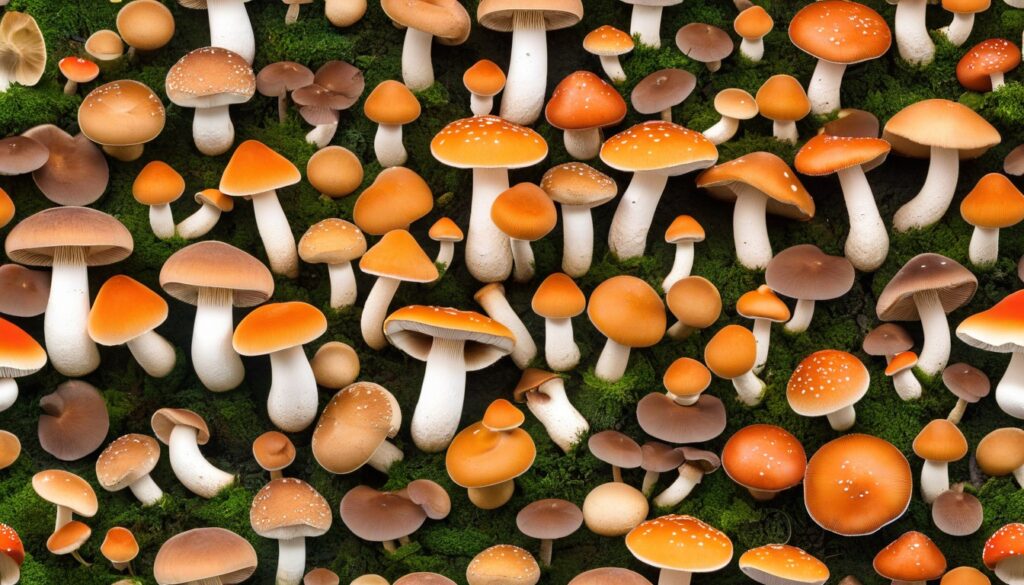Are you looking for a new adventure that combines the thrill of the hunt with the beauty of nature? Foraging for edible wild mushrooms in NY might be just what you need. With its vast forests and diverse ecosystems, NY is a forager’s paradise where you can find an abundance of edible wild mushrooms with some precautions.
However, foraging for wild mushrooms requires proper knowledge, attention, and precautions to ensure a safe and enjoyable experience. In this comprehensive guide, we will explore the fascinating world of edible wild mushrooms in NY. You’ll learn about the different types of mushrooms, when and how to forage safely, and some tips that can enhance your mushroom hunting experience.
Key Takeaways:
- NY has a diverse range of edible wild mushrooms.
- Foraging for edible wild mushrooms requires proper knowledge and precautions.
- Identifying edible mushrooms is crucial to avoid potential risks.
- Respect nature and maintain sustainable foraging practices.
- Learn about the best methods to preserve and store your mushroom harvest.
Types of Edible Wild Mushrooms in NY
There is a wealth of delectable edible wild mushrooms to be found in NY, each with their unique flavor and texture. Some of the most prized varieties include:
Mushroom Name | Description |
|---|---|
Morels | Considered a delicacy, Morels have a cone-shaped cap with a honeycomb texture. They range in color from light tan to almost black and have a nutty, meaty flavor. |
Chanterelles | These trumpet-shaped mushrooms have a fruity aroma and a slightly peppery taste. They come in various colors, including yellow, orange, and white. |
Hen of the Woods | The Hen of the Woods, also known as Maitake, has a frilly texture and a meaty flavor. It grows in clusters on the base of oak trees and can reach an impressive size. |
Puffballs | Round and white, these mushrooms resemble a ball of dough. Their mild and delicate flavor makes them ideal for cooking. |
Lion’s Mane | The Lion’s Mane mushroom has long, flowing locks that resemble a lion’s mane. It has a mild, slightly sweet flavor and a meaty texture that makes it a popular meat substitute among vegetarians. |
These are just a few examples of the many delicious edible wild mushrooms you can find in NY. Make sure to always properly identify any mushroom before consuming it and only eat mushrooms you are absolutely certain are safe.
Identifying Edible Mushrooms in NY
Being able to identify edible mushrooms in NY is essential for any foraging enthusiast. While mushroom identification can be challenging, there are key features and characteristics that can help differentiate between edible and poisonous species.
Feature | Poisonous Mushrooms | |
|---|---|---|
Size | Varies depending on the species | Can range from small to large |
Color | Varies depending on the species | Bright colors, often red or yellow |
Cap Shape | Uniform, smooth, and convex | May be wavy, irregular, or bulbous |
Gills | Limited or absent | Distinct, with some resembling tiny teeth |
Stem | Solid, uniform, and thick | Hollow, thin, and brittle |
Other distinguishing features can include spore print color, the presence of a ring or veil on the stem, and the scent of the mushroom. It’s important to note that not all edible mushrooms will have the same features, and not all poisonous mushrooms will have the features listed above. Therefore, it is crucial to rely on a combination of factors and visual cues when identifying mushrooms.
If you are new to mushroom foraging, it’s best to start by focusing on easily recognizable species such as the chanterelle or oyster mushroom. Invest in a field guide or take a mushroom identification course to enhance your knowledge and confidence. Remember to always double-check any identification before consuming wild mushrooms, as misidentifying a toxic species can have serious consequences.
With time, practice, and patience, you can develop your mushroom identification skills and discover the bounty of edible wild mushrooms that NY has to offer.
Best Locations for Mushroom Foraging in NY
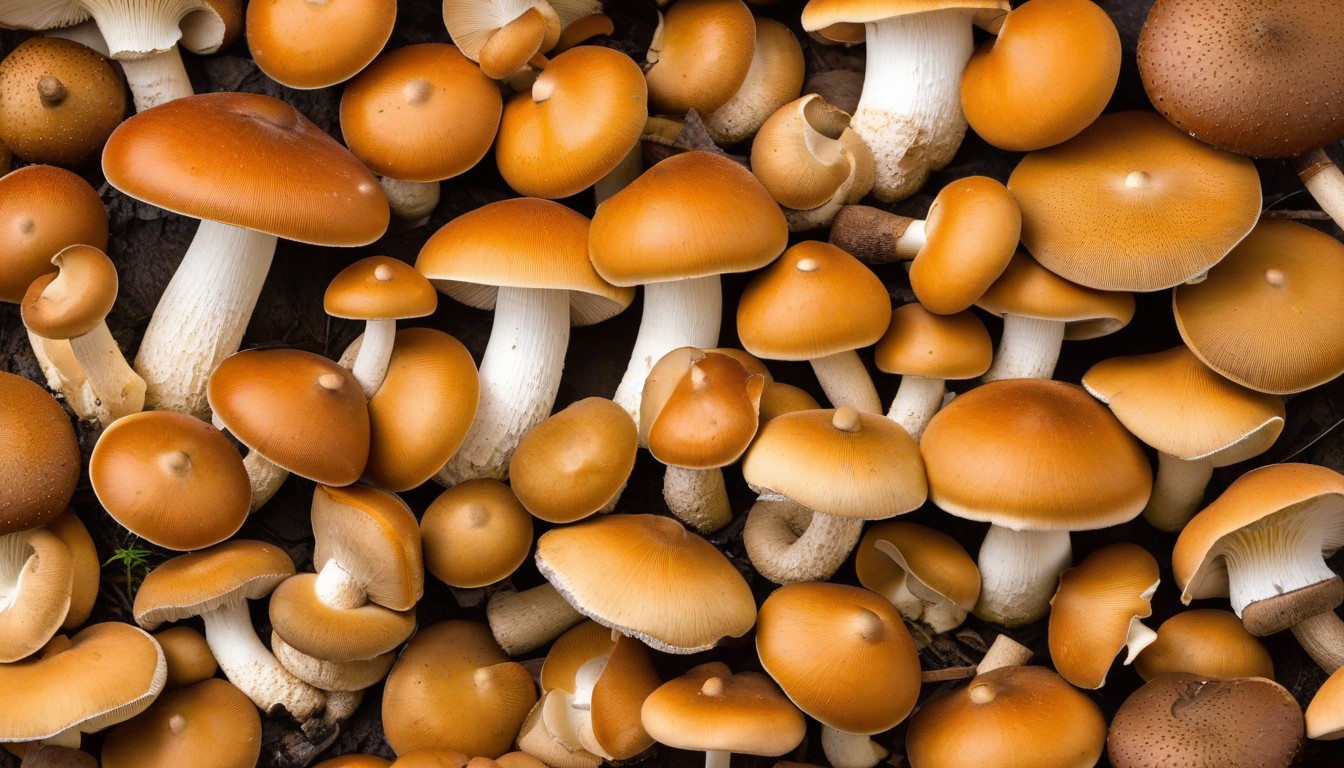
When it comes to finding the best locations for mushroom foraging in NY, there are many options to choose from. Some of the prime spots include:
Name of Location | Features |
|---|---|
Catskill Mountains | This beautiful region is home to a variety of wild mushrooms, including chanterelles and oyster mushrooms. Look for them near streams and low-lying areas. |
Finger Lakes National Forest | This vast forest boasts a large array of edible wild mushrooms, such as porcini and morels. Be sure to check the weather conditions and time your visit accordingly. |
Hudson Highlands State Park | This state park is a popular mushroom foraging destination, thanks to its diverse terrain and rich soil. Keep an eye out for hen of the woods and chicken of the woods mushrooms. |
Other notable locations include Adirondack State Park, Minnewaska State Park Preserve, Rockefeller State Park Preserve, and the Shawangunk Ridge.
Remember to obtain the necessary permits, follow park regulations, and forage responsibly to minimize your impact on the environment.
Foraging Season in NY
If you’re interested in foraging for wild mushrooms in NY, it’s essential to understand the seasonal aspects of this activity. The ideal time of year for mushroom hunting is during the fall, from September to November. During this period, the weather is cooler, and the humidity levels are higher, which creates the perfect environment for mushroom growth.
It’s essential to be aware of the different types of mushrooms that grow in NY during this time of year. Some of the most common mushrooms you’ll find during the fall are chanterelles, black trumpets, and hen-of-the-woods. These mushrooms are prized for their delicious flavor and texture and are commonly used in gourmet dishes.
To find the best spots for mushroom hunting during the fall season, look for areas with plenty of deciduous trees. These trees provide essential nutrients for mushroom growth and serve as a good indicator of where to start your search.
Seasonal Mushroom Chart
Use this chart to identify the foraging season for some popular edible mushrooms in NY:
Mushroom | Foraging Season |
|---|---|
Morels | Spring (April – May) |
Chanterelles | Summer – Fall (June – November) |
Hen-of-the-woods | Fall (September – November) |
Black Trumpets | Summer – Fall (June – November) |
Lion’s Mane | Summer – Fall (July – November) |
Keep in mind that mushroom foraging in NY is heavily influenced by weather patterns, with more or fewer harvests depending on the rainfall in a particular season. Before heading out, check the weather forecast in the area you plan to forage, and remember to dress appropriately and bring any necessary equipment.
Foraging Techniques for Edible Mushrooms
Foraging for edible wild mushrooms requires a combination of knowledge, patience, and skill. Here are some tried-and-tested techniques to enhance your mushroom hunting experience:
1. Use Proper Equipment
Make sure to bring a basket or mesh bag to store your mushrooms, as this allows for proper air flow and prevents spoilage. A small knife or scissors will also come in handy for cleanly harvesting mushrooms without damaging the surrounding environment.
2. Observe Your Surroundings
Before you start picking, take some time to observe the landscape and identify potential mushroom habitats. Look for wooded areas, fields, and areas with decaying plant matter. Keep an eye out for indicators such as dead or dying trees, fallen logs, and damp soil.
3. Mind Your Step
When foraging, be mindful of the ecosystem and avoid trampling on plants and other organisms. As mushrooms are often hidden among leaves and other ground cover, take small steps and be cautious with your movements.
4. Know Your Species
Research and educate yourself on the different types of edible mushrooms found in NY and their identifying features. This will help you differentiate between edible and poisonous mushrooms, and increase your chances of finding a plentiful harvest.
5. Respect the Environment
Avoid over-picking and leave some mushrooms behind to grow and reproduce. Also, take care not to disturb the environment by digging or removing plants, and make sure to properly dispose of any trash or debris.
By following these foraging techniques, you can increase your chances of finding delicious, edible wild mushrooms in NY while respecting and preserving the environment.
Safety Precautions for Mushroom Foraging
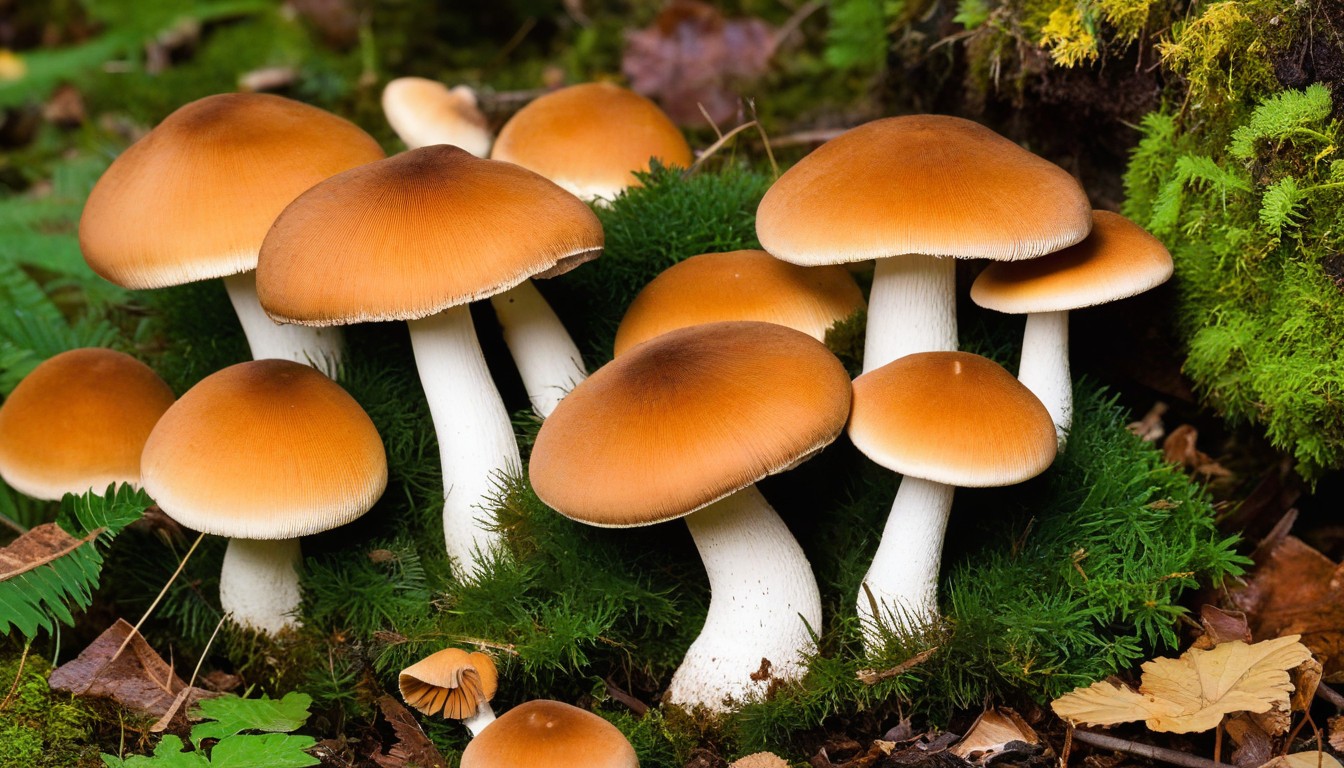
Mushroom foraging can be a delightful pastime, but it is necessary to take precautions to avoid accidents. Here are some safety tips for an enjoyable and risk-free mushroom hunting experience:
1. Bring Identification Resources
Before heading out to forage, make sure to bring a field guide that covers mushrooms found in your area. You can also download a mushroom identification app, but don’t rely on it entirely. Always double-check your mushroom finds with your guide or app before consuming them.
2. Educate Yourself On Poisonous Mushrooms
Be aware of the poisonous mushrooms that grow in your local area. Learn how to identify them and avoid picking them. Some may look similar to edible ones, so it is essential to know how to differentiate between them.
3. Dress Appropriately
Wear appropriate attire, including sturdy boots, long pants, and long-sleeved shirts. It will help protect you from bug bites, poisonous plants, and exposure to ticks and poison ivy.
4. Stay On Marked Trails
Stay on marked paths, so you don’t get lost, and make sure you know the park’s or forest’s boundary lines. It will help prevent you from trespassing and getting lost.
5. Beware Of Wildlife
Be cautious of wildlife you may encounter during mushroom foraging. Snakes, bees, and other creatures are frequently found near wooded areas and should be avoided.
6. Taste in Moderation
When trying new wild mushroom species, always start with a small amount to make sure you don’t have an allergic reaction. Some mushrooms can be toxic, and even small amounts can cause adverse reactions, so it is vital to exercise caution.
7. Inform someone about your location
Lastly, always let someone know where you are going. If you get lost or have an emergency, it is essential to have someone who knows where to look for you.
Mushroom Foraging Etiquette in NY
Foraging for wild mushrooms can be a rewarding and fun experience in NY. However, it is essential to follow mushroom foraging etiquette and ethical guidelines to protect the environment and ensure that other mushroom enthusiasts can enjoy the activity. Here are some unwritten rules to follow:
Respect Nature
First and foremost, respect nature and its ecosystem. Avoid damaging trees, vegetation, or wildlife while foraging by staying on trails and using designated areas. Don’t disturb the natural habitat of the mushrooms or pick more than you need.
Identify and Pick Responsibly
Make sure to know how to identify the mushroom species you are foraging, and only pick the ones that you can positively identify as edible. Do not take any endangered or protected mushroom species and always leave some behind for spore dispersion and regrowth. Avoid over-picking from a single area to maintain biodiversity.
Ask for Permission
If foraging on private land, always ask for permission from the landowner before picking any mushrooms. Respect any restrictions or regulations in public and protected areas.
Leave No Trace
Leave no trace behind and don’t litter or damage the environment in any way. Always carry out everything that you bring in, including waste and any mushroom remains.
Share Knowledge and Recipes
Share your knowledge with other mushroom enthusiasts and pass on the ethical and safety guidelines to ensure that everyone can forage safely and sustainably. Share your recipes and cooking techniques to help others make the most out of the mushrooms you have foraged.
By following these mushroom foraging etiquette and ethical guidelines in NY, we can preserve the environment, promote sustainable practices, and continue to enjoy this exciting activity for years to come.
Culinary Delights: Cooking with Edible Wild Mushrooms
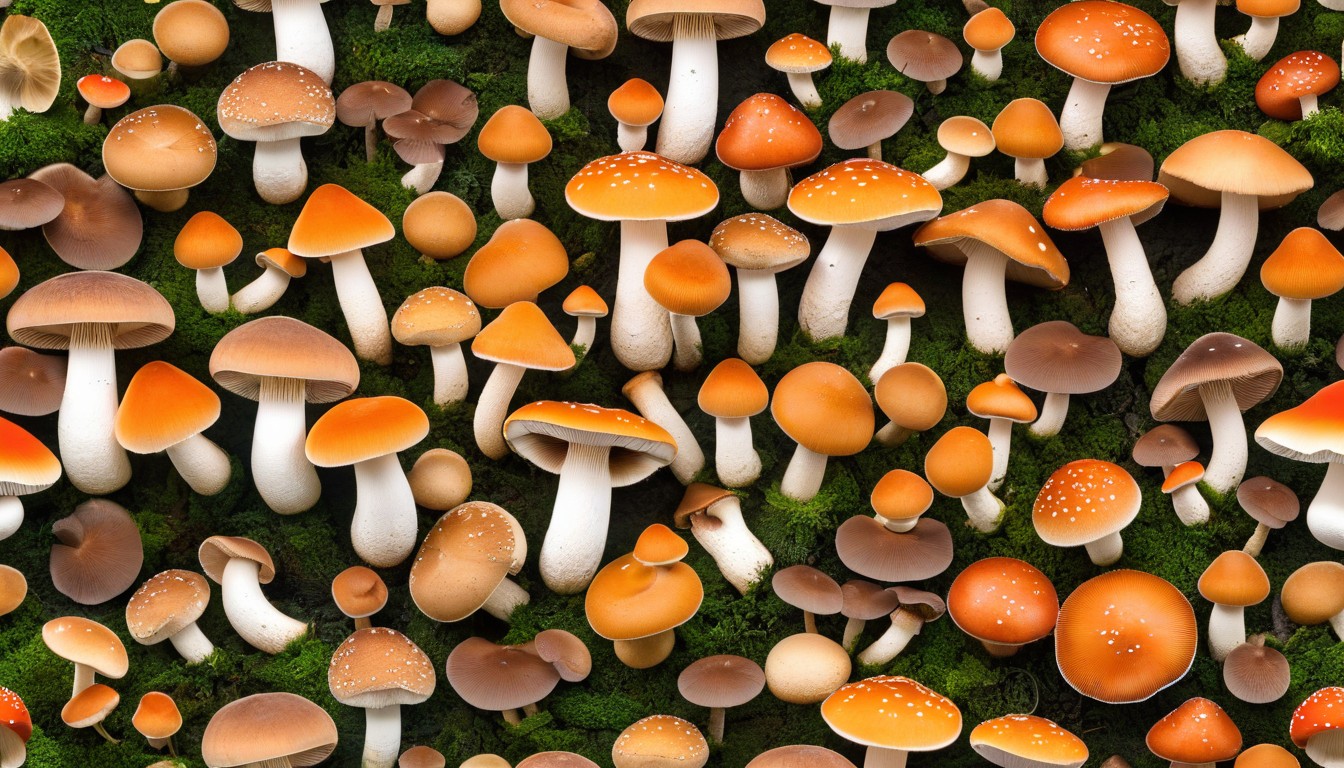
Edible wild mushrooms found in NY not only offer unique flavors but also a host of health benefits. Incorporating these natural treasures into your diet is a great way to add variety and nutrition to your meals. Whether you are a seasoned chef or a beginner cook, there are various ways to cook and enjoy edible wild mushrooms.
Simple Saute
One of the easiest and most popular ways to cook wild mushrooms is by sautéing them in butter or olive oil with garlic and shallots. The simple yet flavorful dish goes well with steaks, chicken, pasta, and more.
Wild Mushroom Risotto
A creamy and delicious risotto with wild mushrooms is a perfect gourmet meal for a special occasion. The key is to use the right type of rice to ensure the creamy texture.
Ingredients | Instructions |
|---|---|
1 pound mixed wild mushrooms (such as chanterelles, morels, and porcini) | Rinse mushrooms under cold water and thoroughly pat dry. Cut into bite-sized pieces and set aside. |
1 cup Arborio rice | Heat olive oil over medium heat. Add Arborio rice and stir until the rice is evenly coated with oil. Pour white wine and continue stirring until the wine is absorbed by the rice. |
4 cups chicken broth | Add chicken broth, one cup at a time, stirring occasionally until the broth is absorbed by the rice. Repeat until the rice is cooked through and has a creamy texture. |
1/2 cup grated Parmesan cheese | Stir in grated Parmesan cheese and sautéed wild mushrooms. Season with salt and pepper to taste. |
Mushroom Soup
A warm bowl of mushroom soup is a comforting and hearty dish. It is also a great way to use a large quantity of wild mushrooms.
Ingredients | Instructions |
|---|---|
1 pound wild mushrooms (such as shiitake, oyster, and cremini) | Trim stems and cut into bite-sized pieces. Saute the mushrooms in butter with garlic and onion until browned. |
1 large onion, chopped | Add chopped onion and sauté until golden brown. |
4 cups chicken broth | Add chicken broth, thyme, and bay leaves. Simmer for 20 minutes until the mushrooms are fully cooked. |
1 cup heavy cream | Discard the bay leaves and puree the soup in a blender until smooth. Stir in heavy cream. Season with salt and pepper to taste. |
These are only a few ideas to get you started. Experiment with different recipes and techniques to create your own favorite dishes using edible wild mushrooms found in NY.
Preserving and Storing Edible Wild Mushrooms
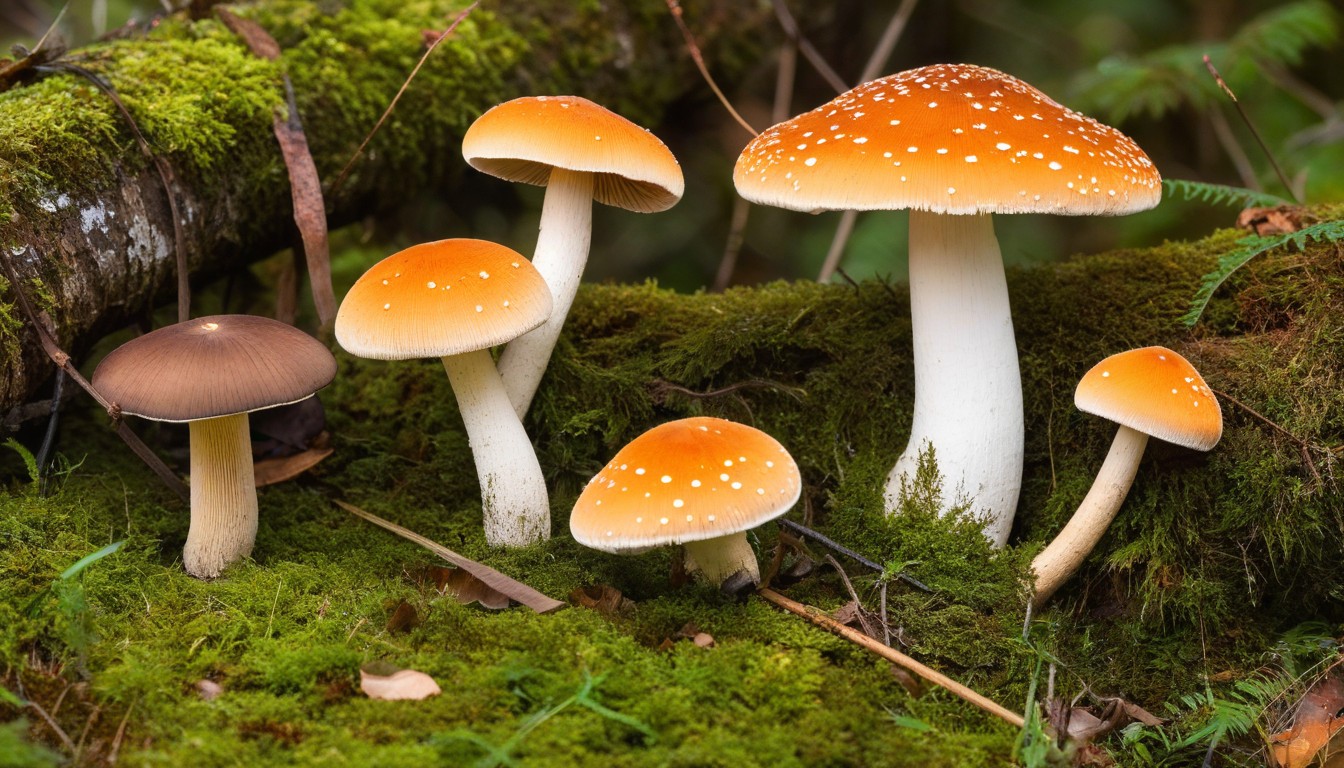
After a successful foraging trip, you’ll likely have a bountiful harvest of delicious wild mushrooms. However, it’s important to preserve and store them properly to ensure they last as long as possible. Here are some of the best methods for preserving and storing your edible wild mushrooms:
Method | Description |
|---|---|
Drying | Drying mushrooms is a great way to preserve them for the long-term. You can air-dry mushrooms by hanging them upside down in a dry, cool area. Alternatively, you can use a dehydrator to speed up the process. Make sure to properly clean and slice the mushrooms before drying them. |
Freezing | Freezing is another effective way to preserve mushrooms. Make sure to properly clean and slice the mushrooms before freezing them. You can either flash freeze them on a baking sheet before transferring them to a freezer-safe container or bag. Frozen mushrooms can be stored for up to 6 months. |
Canning | Canning mushrooms is a great option if you have a large harvest. Ensure you have a pressure canner to safely can low-acid foods. |
Whichever method you choose, it’s essential to store the mushrooms in an airtight container to prevent moisture from getting in.
Preserving and storing your edible wild mushrooms is an excellent way to extend the lifespan of your foraged finds. Choose the method that suits your needs and preferences, and don’t forget to label and date your containers for easy identification!
Conclusion
Foraging for edible wild mushrooms in NY can be a thrilling activity for nature enthusiasts and culinary explorers alike. But it’s crucial to remember that safety should always come first. Take the time to learn about the different types of mushrooms and their identifying features, as well as the best locations and seasons for foraging.
Don’t forget about foraging etiquette and responsible practices to ensure the sustainability of these natural resources. And once you’ve harvested your bounty, get creative in the kitchen and experiment with new recipes and cooking techniques to savor the unique flavors of these fascinating fungi.
With the right approach and mindset, mushroom foraging can be an enriching and fulfilling hobby. So grab your basket, put on your hiking boots, and set out on an adventure to discover the wild world of edible mushrooms in NY!
FAQ
Are all wild mushrooms in NY edible?
No, not all wild mushrooms in NY are edible. Some mushrooms can be highly poisonous, and it is crucial to correctly identify edible species before consumption.
How can I identify edible mushrooms in NY?
To identify edible mushrooms in NY, it is important to consider factors such as size, color, cap shape, gills, and other distinguishing features. Consulting field guides or joining local foraging groups can also be helpful.
Where are the best locations for mushroom foraging in NY?
Some of the best locations for mushroom foraging in NY include state parks, forests, and woodland areas. Popular spots include Adirondack Park, Catskill Park, and the Finger Lakes region.
When is the best time to go mushroom foraging in NY?
The best time for mushroom foraging in NY varies depending on the species. Generally, spring and fall are the prime seasons. Morels can be found in early spring, while chanterelles and boletes are abundant in late summer and early fall.
What are some foraging techniques for edible mushrooms?
Some foraging techniques for edible mushrooms include walking slowly and scanning the ground, brushing away debris to uncover hidden mushrooms, and knowing the habitat preferences of different species.
What safety precautions should I take when mushroom foraging?
When mushroom foraging, it is important to always prioritize safety. Some precautions include wearing gloves and using a mushroom knife, avoiding consumption of unidentified mushrooms, and consulting a knowledgeable expert when uncertain.
What is mushroom foraging etiquette in NY?
Mushroom foraging etiquette in NY involves respecting nature and the ecosystem. Practices such as not over-harvesting, not damaging the habitat, and leaving no trace are essential to protect the mushrooms and preserve the environment.
How can I preserve and store edible wild mushrooms?
Edible wild mushrooms can be preserved and stored through methods such as drying, freezing, or pickling. Properly dried mushrooms can be stored in airtight containers in a cool, dry place.
What are some popular culinary uses for edible wild mushrooms?
Edible wild mushrooms can be used in a variety of culinary dishes, from simple sautées and soups to gourmet recipes. They add unique flavors and textures to dishes like risottos, pasta sauces, and stir-fries.
Can I sell wild mushrooms that I forage?
Selling wild mushrooms that you forage in NY may require permits and compliance with local regulations. It is important to research and understand the legal requirements before selling foraged mushrooms.
Can I consume mushrooms I find growing in my backyard?
It is not recommended to consume mushrooms growing in your backyard unless you are certain of their identification. Some species may be toxic or inedible. If unsure, consult a mushroom expert or mycologist for proper identification.

